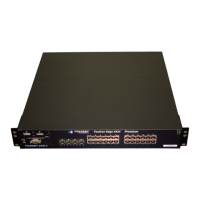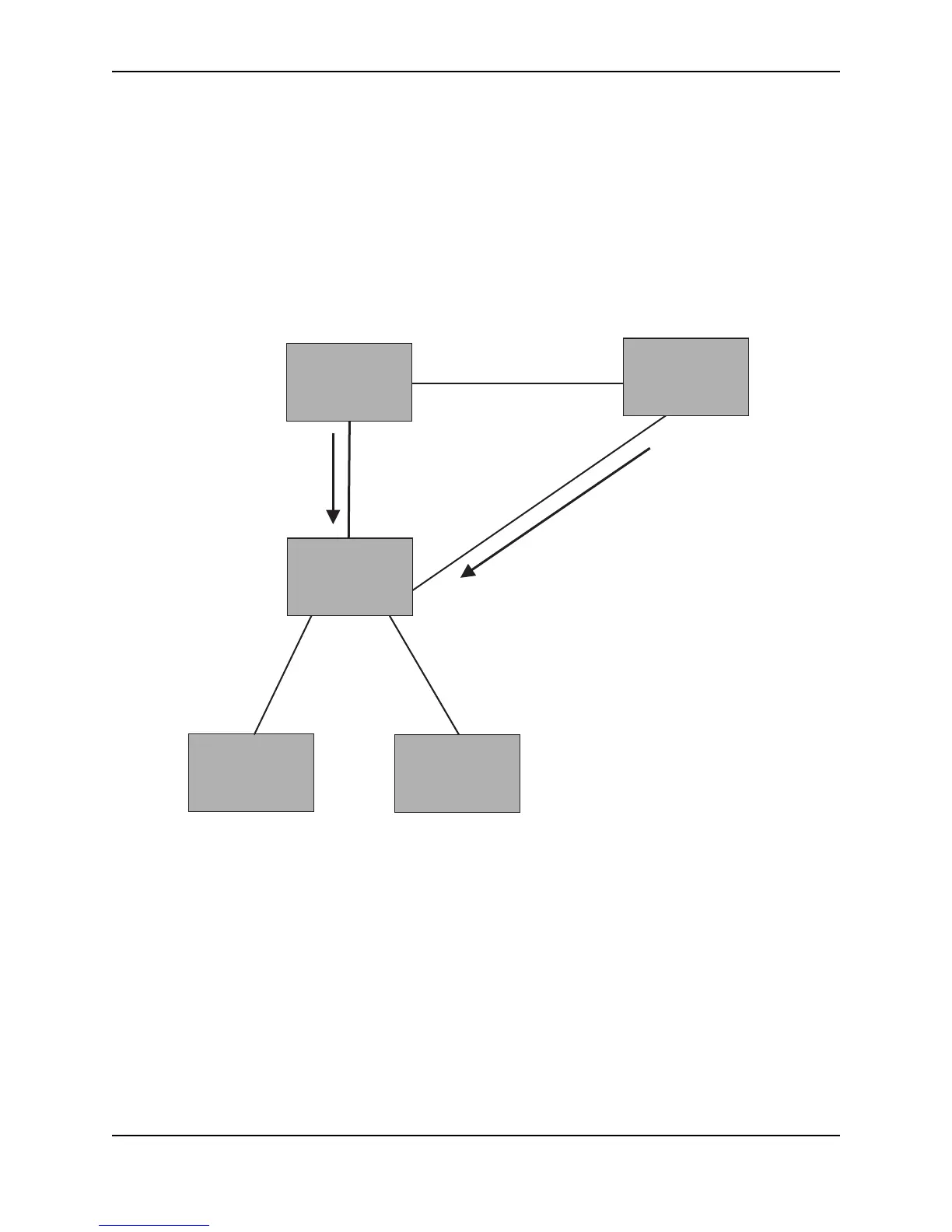Configuring Spanning Tree Protocol (STP) and IronSpan Features
December 2005 © Foundry Networks, Inc. 7 - 29
The handshake that occurs between Switch 60 and Switch 100 follows the one described in the previous section
(“Handshake When No Root Port is Elected” on page 7-24). The former root bridge becomes a non-root bridge
and establishes a Root port (Figure 7.9).
However, since Switch 200 already had a Root port in a forwarding state, 802.1W uses the Proposing -> Proposed
-> Sync and Reroot -> Sync and Rerooted -> Rerooted and Synced -> Agreed handshake:
• Proposing and Proposed – The Designated port on the new root bridge (Port4/Switch 60) sends an RST
BPDU that contains a proposing signal to Port4/Switch 200 to inform the port that it is ready to put itself in a
forwarding state (Figure 7.9). 802.1W algorithm determines that the RST BPDU that Port4/Switch 200
received is superior to what it can generate, so Port4/Switch 200 assumes a Root port role.
Figure 7.9 New Root Bridge Sending a Proposal Flag
Switch 400
Switch 300
Port1
Port1
Root port
Forwarding
Port2
Port2
Port3
Port3
Switch 60
Port4
Designated port
Proposing
Port2
Designated
port
Port2
Root port
Port4
Designated port
Proposed
Handshake
Completed
RST BPDU
sent with
a Proposing
flag
Proposing
Switch 100
Switch 200

